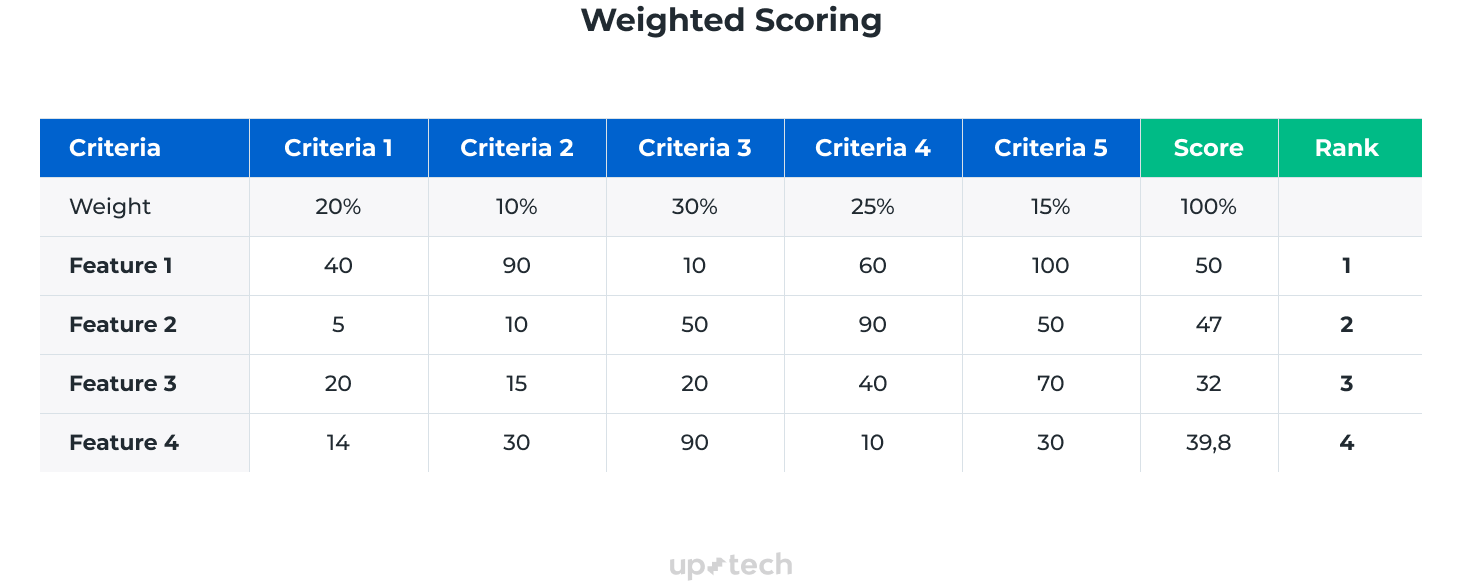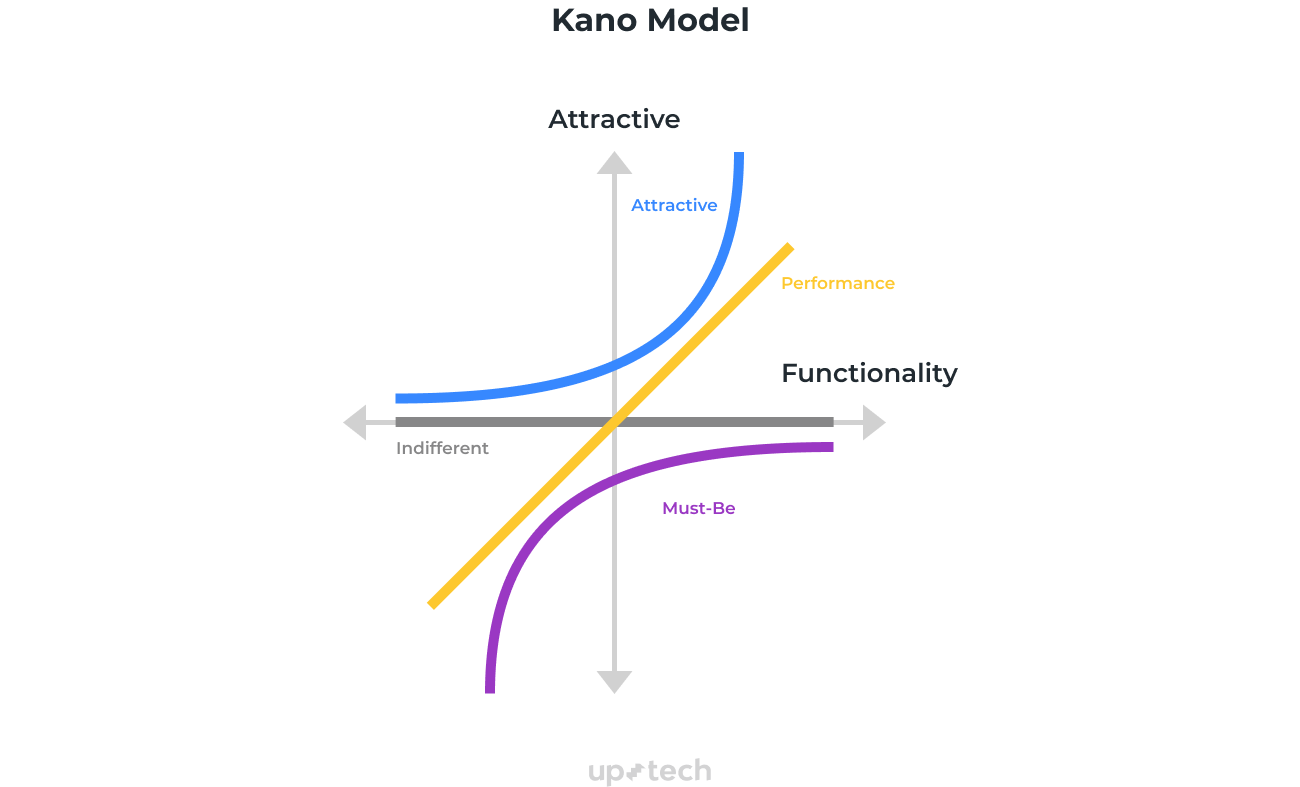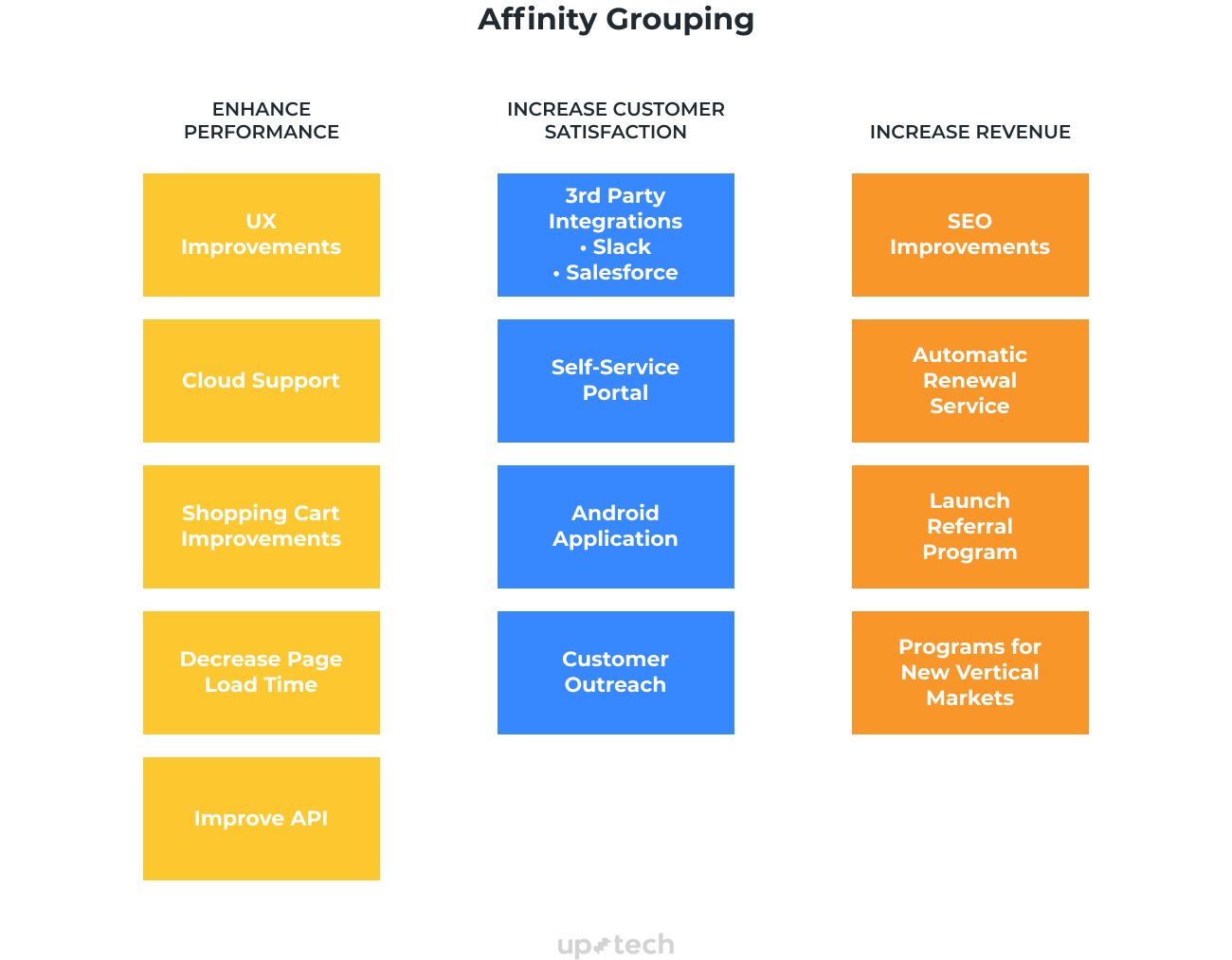Brainstorming for product features is an exciting process where team members are eager to chip in ideas. When you have trouble deciding which ideas are to be prioritized, the fun ends as you struggle through the upgrades.
Deciding which product feature takes the top spot on the list and which are sent to the end of the queue requires weighing in various factors. You’ll have stats from user feedback, expert opinions, trends, and the itch to outdo your competitors.
Such decisions could also become personal, as you find it hard to push your team members’ ideas back in favor of others. Ultimately, not all features can be executed at once, as it involves time, effort, and investment.
To prevent you from getting overwhelmed and be fair in your approach, you’ll need features prioritization frameworks. They allow you to make data-driven decisions and ensure you’re fair to each stakeholder of the product.
.png)
Getting Started With Features Prioritization
To get started on the right foot, you’ll want to stay true with your product strategy. Revisit the goals of the product, and take note of how the roadmap looks in the coming years. Understand the problems that the product needs to solve and the demographic it’s built for.
As the product grows, you’ll find that it becomes harder to focus on the key strategies. Distractions can derail you from the vision and goals.
If you have trouble keeping track of your product strategy, you can use Plai, which we’re using to keep the entire team on the same page. It prevents miscommunications on matters related to the product features.
You can also mimic Amazon, by having a resounding vision statement that resonates across all of its employees:
“to be Earth’s most customer-centric company, where customers can find and discover anything they might want to buy online, and endeavors to offer its customers the lowest possible prices.”
Such a statement keeps everyone on the same wavelength and is helpful when it comes to deciding what’s necessary for a feature.
7 Popular Prioritization Frameworks And Strategies
Once you’re aligned with your team in common product goals, you’ll want to try out these proven feature prioritization frameworks and strategies.
- Impact/Effort Matrix
- Weighted Scoring
- Kano Model
- Buy a Feature
- Opportunity Scoring
- Affinity Grouping
- Story Mapping
Impact/Effort Matrix

The impact/effort matrix allows you to categorize the features into each of the four quadrants. Doing so allows the team to have a better idea of how a particular feature will deliver value in the long term.
When working with this model, consider the impact delivered by the feature in terms of market demand, customer acquisition, retention, engagement, revenue, and other measurable factors. Your team defines the values within this model.
You can hold a discussion with your team and let the member vote on features according to its impact and effort needed. Once the process is done, you’ll want to focus on features that require a low effort but deliver high impact.
Pros
- An easy and flexible technique that can be implemented quickly.
- It helps the team to stay focused.
- It can be adapted to suit your team.
Cons
- It’s not data-driven and more of guesswork. May be subjected to personal bias.
- As product features grow, this framework becomes less efficient, particularly for large product teams.

Weighted Scoring

Weighted scoring is a step above the impact/effort matrix, which is more subjective.This model allows you to assign a percentage of scores against the various costs and benefits.
Before using this method, you’ll need to establish the criteria that are deemed important in the upcoming version. Discuss in your team how the weights are assigned to each feature.
Once all the criteria are rated, the scores are totaled up, and features are ranked accordingly.
Besides weighted scoring, you can also use the RICE scoring system, which is based on the formula:
Reach x Impact x Confidence / Effort
The framework allows each feature to be rated in the four aspects where the RICE score is then used to prioritize the features.
Pros
- It enables prioritization based on the needs of different stakeholders.
- Weighted & RICE scoring helps the team to be more objective.
- These methods lend credibility to your product strategy.
Cons
- Scoring may not be aligned with some product strategies.
- Weight and scores can sometimes be bias to favor the preference of certain parties.
- It can lead to fragmented products, which are not aligned to their unique value proposition.

Kano Model

The Kano model allows you to judge the features from the customer’s point of view. Based on the model, features can be classified into 4 categories according to the level of satisfaction and functionality.
A ‘must-be’ feature means that it is mandatory, but doesn’t get a customer excited even if much effort is put into it.
On the other extreme, a feature is deemed ‘attractive’ when it gets customers thrilled, but have no negative effects when left out of a product.
‘Performance’ type features increases customer satisfaction when they are included, but lead to dissatisfaction when omitted.
To get an idea where the features stand on the Kano chart, you’ll need to conduct a questionnaire with customers. Based on the feedback, you can determine which features are to be prioritized in the coming update.
Pros
- It highlights the potential strengths and weaknesses of a product.
- You can rank product features from the customer’s perspective.
Cons
- It doesn’t provide details on the resources required.
- Kano is time-consuming.
- The result could be a wishlist and expectations by customers without any technical background.

Buy A Feature
Buy a feature is an interactive product prioritization exercise that you can carry out with potential customers. You start by listing out the features and tagging them with a price relative to the cost of app development.
Each of the participants is presented with a set amount of cash and are told to buy features that they are interested in. There are no limits of features or cash that can be spent by the participants.
Make a list of the features bought, amount, and interview the participant on the reasons of doing so. You’ll be able to find what features are attractive to customers and gain a better understanding of the motivations of different participants.
Besides holding the Buy A Feature approach with customers, you can also do so with your team members or stakeholders to get a different perspective.
Pros
- It helps to overcome struggles with a complicated wish list and limited development resources.
- It’s quick and simple.
Cons
- This method is only limited to features that are already defined in a product roadmap.
- It requires a group of participants, which can be challenging to organize in some circumstances.
Opportunity Scoring

Opportunity scoring takes the approach of evaluating customer satisfaction based on the outcomes of specific features. This is because customers perceive value in terms of results and not the technical implementation of the features.
To carry out this method, you’ll need to list the outcome of the potential features to be introduced. Have customers to judge if the features are important to them and if they’re satisfied with the existing solutions from a scale of 1 - 10.
Then, the features are plotted on the chart, and you’ll have a clear visualization of which ones have a high satisfaction when introduced but are low on the satisfaction score. The gap indicates an opportunity gap that can be filled by working on the feature.
Pros
- It’s a simple and efficient framework for identifying innovative solutions to common problems.
- It’s easy to visualize on a chart.
Cons.
- Customers may overestimate or underestimate the importance of a feature during the survey.
Affinity Grouping

Affinity grouping is a process that can be carried out informally where a group of team members brainstorms ideas and opportunities for improvement for the product. Members can write the ideas down on paper, post-it notes, or whiteboard.
Once all the ideas are jotted down, you can start sorting them into groups. Members then vote on the groups that they believe are more important. In the end, you’ll have a list of prioritized items that can be implemented in the upcoming features.
Pros
- This method allows contribution across various departments.
- You can see the big picture.
- Using post-it notes makes organizing into groups and subgroups easy.
Cons
- You’ll have to wait until the end of the meeting to finally receive the affinity diagram.
- A manual search is needed to find a particular note on the affinity diagram.
Story Mapping

A story map is created by having a horizontal axis for the user journey and a vertical axis for priority. By completing the story map, you’ll have various features sorted according to the usage sequence and importance.
Story mapping is great for charting out an MVP and also to maintain an ever-growing list of features. Features that are higher up in priority obviously deserve more attention than others.
Pros
- Story mapping helps you to identify the MVP quickly.
- It’s centered around the user’s experiences.
- It’s collaborative.
Cons
- This method doesn’t consider external product prioritization factors like business value and complexity.

Which Features Prioritization Framework Do We Use?
There isn’t a one-size-fits-all feature prioritization framework or strategy. Depending on the project, we may use a combination of a few frameworks.
It’s important to evaluate the input needed in prioritizing the features. For example, you already have feedback from users, but lack data on the impact on business and complexity. In such a case, you can validate the features by using Impact vs Effort Matrix or Weighted Scoring.
Story Mapping becomes your best tool when you’re launching a startup. It allows you to chart the MVP and scale it when you’re adding more features in future versions.
When you’re overwhelmed with ideas from your team, stakeholders, and investors, turn to users for validation with Kano Model or Opportunity Scoring.
Pro Tips:
It’s tempting to try every framework you chanced upon on each of your product features.
Don’t.
Doing so is a sure way to burn time and money and further complicate your life as a product manager.
Instead, use only a prioritization framework that allows you to gain insights from a new angle. Take into account the time, resources, and data that are at your disposal.
Summary
Deciding on which features your team should work on should be a data-driven affair. We’ve had success by using various prioritization frameworks for the projects we’ve worked on.
When you discard all personal preferences and start ranking features by quantitative and qualitative results, your chance of satisfying users in the next update grows tremendously.
Still doubtful about prioritizing your product features? Leave a message and I’ll get back to you


















































































.avif)

















